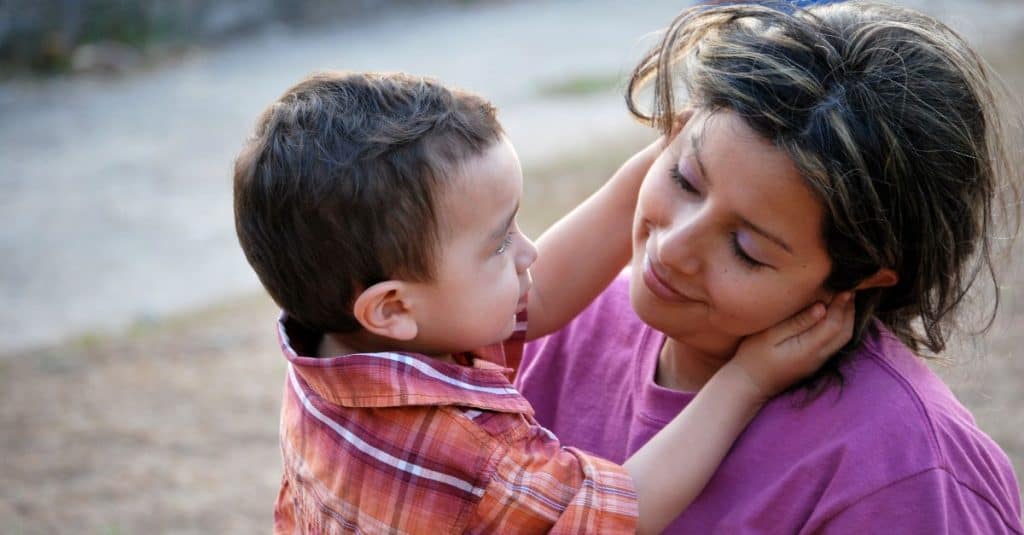Babies are exceptionally curious human beings. They are like mini scientists who conduct experiments with everything around them, including their own bodies. Among those things they discover is physical touch. Just as a parent’s embrace brings comfort and sucking their thumb helps them calm down, they learn that touching themselves in certain areas can make them feel good.
Seeing a baby hump can be alarming, especially for a first-time parent. The good news is that it usually isn’t cause for major concern. Most of the time, babies hump things simply because it feels good to them. It is a sensory-seeking and self-soothing behavior, much like thumb-sucking and cuddling a lovey.
Rest assured, humping during infancy doesn’t lead to sexual dysfunction in adolescence and adulthood. Unless it is accompanied by other signs, humping isn’t indicative of abuse or exposure to inappropriate material. Most of the time, babies outgrow these behaviors on their own by the time they reach kindergarten.
Reasons Why Babies Hump Things
-
Seeking Sensory Input

There are plenty of nerve endings down there that feel good when stimulated. Babies are smart. They discover that certain types of touch in that area feel good, and they quickly figure out how to elicit these good sensations.
Adults understand the highly sexual connotations that are usually associated with behaviors such as humping and genital stimulation. Babies and toddlers haven’t learned of such social norms yet, and likely will not see anything wrong with exhibiting these behaviors in public.
As such, they may use it as a way to alleviate boredom in an under stimulating environment. This can place parents in potentially embarrassing situations if a baby decides that a public park or the dinner table is a good place to start humping.
-
Feeling Uncomfortable
Sometimes, an attempt to alleviate discomfort may look similar to humping. A soiled or ill-fitting diaper can cause significant discomfort and squirming or shifting around could be mistaken for humping. There might be scratchy clothing that is irritating the skin in that area.
Pain in the genital region is a classic symptom of a urinary tract infection and a baby not knowing any better, might be humping as their way of directing your attention to the area. A baby might also thrust their hips forward to scratch an irritated rash through a diaper. In baby girls especially, a UTI or yeast infection might be the reason for the pelvic thrusting.
Check to see if there is an easily remediable issue, such as a diaper that needs changing or clothing that doesn’t feel right on their skin. Certain detergents, diapers, creams, and powders can cause uncomfortable and even painful allergic reactions.
On the flip side, frequent and/or aggressive humping and rubbing can irritate the skin in that area, and that irritation can cause them to itch and scratch.
In these cases, you may want to involve your baby’s healthcare provider to make sure that there isn’t anything causing your baby discomfort and create solutions for anything that is bothering them.
-
Getting Your Attention

Babies learn that certain behaviors, such as crying, are more likely to elicit their caregivers’ attention. They learn when they act a certain way, an adult comes to their side and attends to their needs and wants.
Humping might be a baby’s way of signaling to a parent that they have a need that is not being met in the moment. They might also be looking for your attention because they are bored and want someone to play with them.
If this is the case, your reaction to them humping might be incentivizing the behavior. If they are clean, dry, fed, and in a safe environment, try ignoring them and only coming to their attention once the behavior stops.
If the behavior is done to grab one specific caregiver’s attention, have someone else come in to redirect their attention away from both the humping and said caregiver.
-
Soothing Themselves
Because humping feels good to a baby, they may come to use it as a self-soothing mechanism, much like thumb sucking and cuddling with a lovey. You might notice them humping a stuffed animal or blanket in their crib when you put them down at night or for their afternoon nap.
If the humping is contained in this context of helping your baby self-soothe and fall asleep and isn’t interfering with their other daily activities and general well-being, you might decide to leave the behavior alone.
Self-soothing behaviors such as humping might also arise or increase in frequency during periods of stress and transition. The welcoming of a baby sibling, moving to a new home, and starting a new daycare are all situations that can cause stress in young children.
Introduce your child to alternative ways of soothing themselves. Loveys, stuffed animals, and blankets are popular comfort objects that many children find helpful in times of stress.
Redirecting a Humping Baby

Babies don’t attach the same sexual connotations that adults do to behaviors involving genitals and they lack the social norms that dictate that such behaviors relating to their genitals need to be kept private.
Humping and other behaviors relating to the genitals during infancy and toddlerhood generally respond well to redirection and caregiver intervention. In public, redirect their attention by offering a snack or a toy to play with. If the behavior stems from anxiety due to being in a new environment, a quick cuddle from a parent works to calm and reassure.
At home, direct them to their bedroom should they want to hump or rub themselves. Otherwise, tell them that they need to choose an alternate activity to engage in.
If there is a specific object that they are humping, try removing said object to discourage them. Offer a replacement object that differs in shape and texture from the original item. If it is a piece of immovable furniture, try covering it with a sheet or hiding it behind something else that doesn’t pique their interest.
If you observe that this behavior occurs most during periods of stress or transition, guide them through their emotions and help them find other methods of self-soothing. Fidget toys and stress balls can help with nerves, and bedtime stories and special nightlights can help bring relaxation at bedtime.
Teaching and Modelling Privacy
A baby might not even realize which body part it is exactly that feels good to touch or rub. It is entirely possible that their understanding of the matter is limited to “When I push my hips against a blanket, it makes me feel nice.”
If they are old enough to identify body parts such as their eyes and ears, they are old enough to learn the proper names of their private parts.
Perhaps while they are in the bath, you might say something along the lines of “I’m going to help you clean your penis/vagina now, is that okay?” or while helping them get dressed, you might say “here’s your underwear. It covers your private parts, your penis/vagina and your buttocks.”
If they are old enough to understand the concept of privacy, sit them down and explain why private parts are meant to be kept, well, private. Acknowledge and validate that rubbing or touching their genitals makes them feel good. They are not bad or dirty things, but they are things meant to be used and enjoyed in the privacy of a bedroom or bathroom.
Do this as calmly and nonchalantly as possible. Remember your little one doesn’t understand attach the idea of adult sexuality to their actions yet. To them, humping is nothing more than an innocent behavior that makes them feel good and helps them self-soothe.

